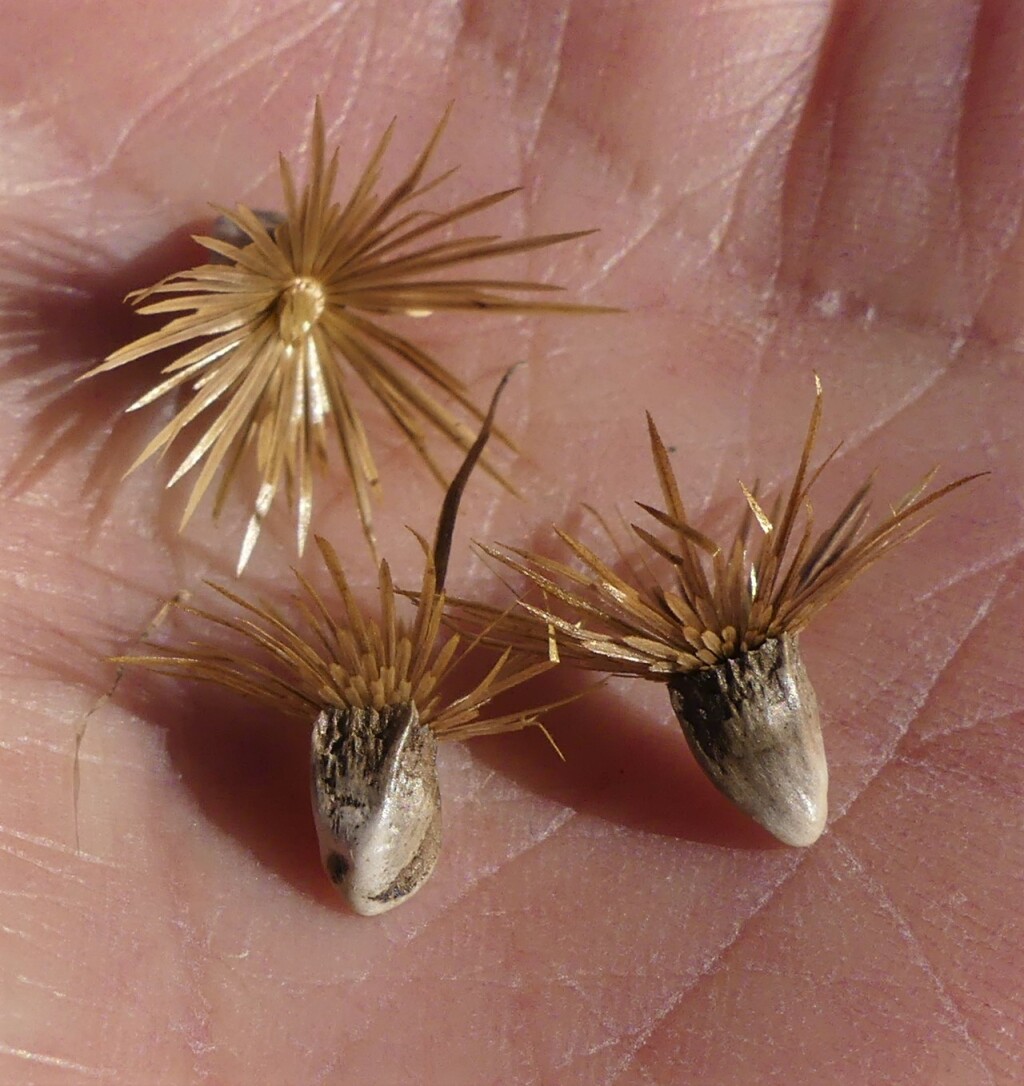Carthamus
Annual or rarely perennial herbs; stems terete, striate, woody at base. Leaves basal and cauline, alternate, rigid, toothed to deeply pinnatisect, with spines on apices of teeth and lobes. Capitula sessile, campanulate, terminal, in corymbose clusters or solitary; involucral bracts in several series, unequal, imbricate, rigid, herbaceous, spinose, outer ones leaf-like; receptacle flat, densely hairy. Florets bisexual, fertile, tubular, more or less equal, purple, pink, orange, yellow or white; corolla deeply 5-lobed; anthers sagittate at base, rounded at apex; style bilobed, with linear erect branches, apices obtuse. Cypselas obovoid to broad-obconical, 4-angled, smooth, glabrous, outer ones rugose; pappus of several series of narrow ciliate scales, or totally absent, often absent from outer cypselas only.
About 20 species, from the Mediterranean region and south-western and central Asia; 5 species naturalised in Australia.
Jeanes, J.A. (1999). Asteraceae. In: Walsh, N.G.; Entwisle, T.J., Flora of Victoria Vol. 4, Cornaceae to Asteraceae, pp. 652–666. Inkata Press, Melbourne.
 Spinning
Spinning



